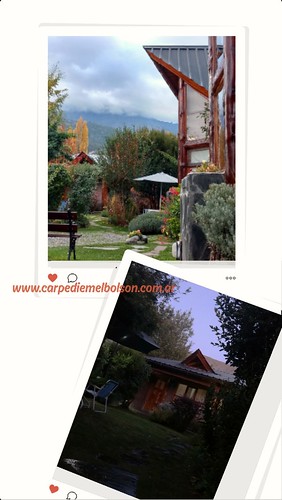As actors), made a sense of a additional personalised remedy approach whereby the youngster, instead of PubMed ID:http://www.ncbi.nlm.nih.gov/pubmed/21330468 their illness, was recognised, produced to really feel specific and cared for. Additionally, parents explained that by interacting with hospital personnel inImproves cooperation and motivation In accordance with 14 interviewees, an important advantage stemming in the earlier two outcomes was that the youngster showed a greater willingness to undergo radiotherapy treatment. Once again, this occurred inside a assortment of techniques. For some less-resistant individuals, the MMP supplied an opportunity to engage in an enjoyable activity and so became `the one factor that excited and motivated (the youngster) to be going in each day’. Meanwhile, numerous parents of previously resistant individuals recalled how the anticipation of carrying out MMP activities had changed their kid from obtaining to be bribed with various inducements to attend RT sessions to subsequently `urging’ parents to acquire in to the automobile pleading `We’ve got to go in! We’ve got to go in!’ Certainly, a single parent reported that their kid (aged 7) had cried when told she wouldn’t be going to the radiotherapy unit to perform on her film simply because it was the weekend. Furthermore, 4 of the five respondents in our sample whose youngsters had required common anaesthesia throughout radiotherapy credited the MMP with assisting their  child’s transition to sedation or to ending the use of anaesthesia altogether. Two of those parents explained how their daughters had been very fearful of RT sessions, which they attributed to sedation delirium combined with their child’s lack of understanding of what occurred in the course of RT sessions (as a result of getting anaesthetised). Each parents were strongly on the view that (1) watching DVDs produced by past patients, and after that (2) viewing a video of their very own treatment under light sedation, resulted directly in their kid becoming cooperative and compliant with therapy needs whilst awake. The vignette in box three delivers a case example of one of these experiences.Other MMP process outcomes Lastly, 12 respondents indicated that the course of action added benefits with the MMP had extended beyond their youngster to other loved ones members. Parents described how seeing their kid smiling and laughing as an alternative to `scared and refusing to get within the car’ had helped to lessen their own emotional distress. Nine members of this respondent group additional noted that involving siblings in MMP activities andor improvements inside the cancer patient’s well-being had contributed to alleviating the concern and be concerned expressed by brothers and sisters. Parents also commented on how the MMP served as a welcomed distractor at household for all family members, where conversations about creating the child’s movie offered `something entertaining to think and speak about … as an alternative to the other doom and gloom aspects of treatment and (cancer management)’.Shrimpton BJM, Willis DJ, Tongs CD, et al. BMJ Open 2013;three:e001666. doi:ten.1136bmjopen-2012-Movie producing as a cognitive distraction for paediatric radiotherapy individuals Box three A vignette of outcomes attributed towards the MMP showing the film at school had been a `boost to (the child’s) selfconfidence’ because the paediatric patient subsequently felt greater understood and much more accepted by their classmates. Several interviewees, whose kid either moved college or MedChemExpress 2’,3,4,4’-tetrahydroxy Chalcone entered a brand new grade, had also found the movie to be a vital aid when explaining to new teachers the child’s health state and any delayed educational outcomes. Contributes to maintain.
child’s transition to sedation or to ending the use of anaesthesia altogether. Two of those parents explained how their daughters had been very fearful of RT sessions, which they attributed to sedation delirium combined with their child’s lack of understanding of what occurred in the course of RT sessions (as a result of getting anaesthetised). Each parents were strongly on the view that (1) watching DVDs produced by past patients, and after that (2) viewing a video of their very own treatment under light sedation, resulted directly in their kid becoming cooperative and compliant with therapy needs whilst awake. The vignette in box three delivers a case example of one of these experiences.Other MMP process outcomes Lastly, 12 respondents indicated that the course of action added benefits with the MMP had extended beyond their youngster to other loved ones members. Parents described how seeing their kid smiling and laughing as an alternative to `scared and refusing to get within the car’ had helped to lessen their own emotional distress. Nine members of this respondent group additional noted that involving siblings in MMP activities andor improvements inside the cancer patient’s well-being had contributed to alleviating the concern and be concerned expressed by brothers and sisters. Parents also commented on how the MMP served as a welcomed distractor at household for all family members, where conversations about creating the child’s movie offered `something entertaining to think and speak about … as an alternative to the other doom and gloom aspects of treatment and (cancer management)’.Shrimpton BJM, Willis DJ, Tongs CD, et al. BMJ Open 2013;three:e001666. doi:ten.1136bmjopen-2012-Movie producing as a cognitive distraction for paediatric radiotherapy individuals Box three A vignette of outcomes attributed towards the MMP showing the film at school had been a `boost to (the child’s) selfconfidence’ because the paediatric patient subsequently felt greater understood and much more accepted by their classmates. Several interviewees, whose kid either moved college or MedChemExpress 2’,3,4,4’-tetrahydroxy Chalcone entered a brand new grade, had also found the movie to be a vital aid when explaining to new teachers the child’s health state and any delayed educational outcomes. Contributes to maintain.
